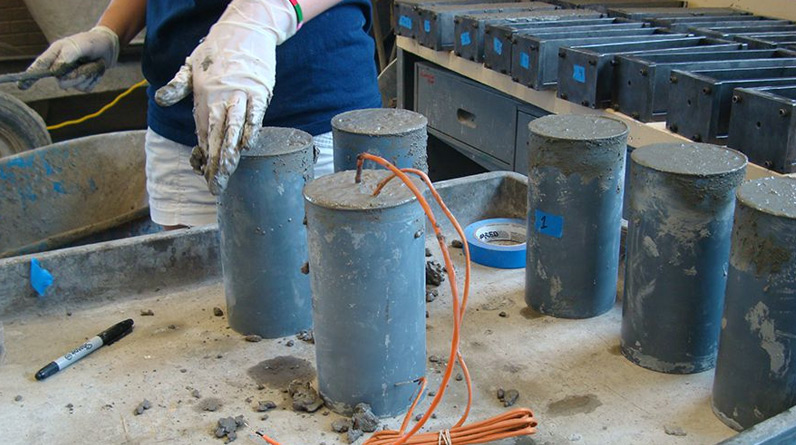In the concrete industry, the term maturity refers to how far along the curing process is at any given point. Technically, it’s a measurement of the relationship between the concrete’s temperature, how much time has passed, and how strong the mixture is at a given time. This measurement can be calculated accurately for more complete monitoring and better control over the curing process.
A Simple Equation for Maturity Calculation
The simplest way to calculate Concrete Maturity is by using the equation maturity = time x temperature. Contractors generally have no trouble measuring the passage of time since pouring, so it’s the concrete temperature that they generally worry about.
Historically, they used simple temperature sensors to take measurements, then performed what’s known as maturity calibrations by sending samples from different areas of the concrete to a lab for strength testing. Today, maturity calculations are much simpler to perform. Maturity calculation tools are now available that utilize not just remote sensors but also advanced technology to provide real-time data on concrete maturity levels.
Benefits of Real-Time Monitoring Over Lab Testing
Some companies are still performing compressive strength tests in laboratories to estimate concrete maturity. Relying on these tests can wind up causing wasted time, and in the concrete industry, there’s little of that to spare. The problem is that laboratory tests often lag behind in-place concrete curing.
Contractors who utilize the compressive cylinder maturity testing method must wait for the lab to catch up to real-world conditions. Those that use more technologically advanced concrete monitoring technology that includes on-site maturity calculators may be able to strip and remove forms and shores, stress tendons, and apply loads sooner without jeopardizing concrete strength or structural integrity. This expedited schedule can help keep the entire project moving forward on time.
Real-time concrete maturity monitoring also offers fail-safes not available with laboratory testing. Measuring the curing process in place means that contractors will know immediately if temperature changes are causing trouble with the curing process. They can take protective measures immediately instead of having to guess when they might be required.
Additional Tips for Controlling the Curing Process
The most essential aspects of temperature control happen during the mix design stage. Contractors select different cement types to vary the amount of heat generated, adjust the finesse of the cement, or include supplementary cementitious materials to reduce heat.
Determining when to apply these changes is easiest when contractors use an all-in-one concrete monitoring system. However, there are still ways for contractors to make adjustments as needed on-site. They include:
- Using ice as part of the concrete mix.
Dampening side forms with cool water.
Keeping an evaporative retarder handy.
Applying insulated blankets or heated enclosures to maintain curing temperatures above 40oF for the first four days.
Never pouring concrete over frozen ground.
While it’s possible to cure concrete properly using traditional methods for determining mixtures and altering them on the fly, today’s contractors are better off using the tools available to them.
Better Monitoring Leads to Greater Control
Using more effective concrete maturity monitoring systems and forecasting technologies makes it possible for contractors to exert greater control over the curing process. While it’s true that making the switch will require a small investment, it will pay off in the form of faster project turnarounds and fewer mistakes.


